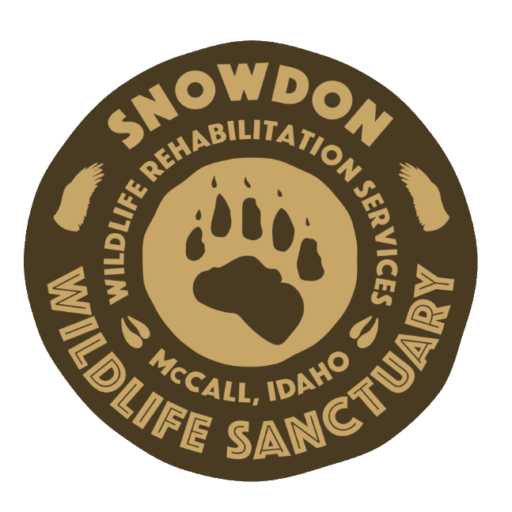
Blog by Alyssa Lakota & Genevieve Arterburn
On a cold May evening, in the middle of a heavy rain and hail storm, a gosling wandered up someone’s driveway, separated from his siblings and parents. A month later, in June, another gosling was found orphaned near Little Payette Lake. In both circumstances, efforts to reunite them with family were unsuccessful. Attempts to introduce them into flocks with other goslings around the same age were made in vain, as hardly any geese were found between McCall and Cascade. We presume Avian Flu and a long, tough winter had much to do with the decrease in their numbers. The couple of flocks we did manage to locate swam away before an introduction was possible, or they simply took no interest. One flock had at least six goslings. It felt as if they said, “We already have too many mouths to feed. Move along.” And so, we did [move along].
As the goslings grew, we continued our search, reaching out to multiple people in hopes of a sighting. During our pursuit, we stopped to ask a man and his daughter riding bicycles if they had seen any geese. They did not, but they took our number, and a short time later, they called. We met up and took to the water to scout the location. We couldn’t see them, but we could hear them. A plan could now be hatched. A few days later, when conditions were right, we met up again, taking to the water yet again, only this time with our two goslings on board, heading towards the flock. There they were. We set our goslings loose and hid in the tall grasses and behind our flotation devices to ease them into the flock. It seemed as if they had found their new tribe, but an adult goose suddenly attacked one of the two goslings, scaring both out of the water and up an embankment. The flock aggressively shook their heads in unison, “No,” and encouraged their young to follow, leading them away from the two in our care. We felt defeated. We strove to avoid releasing them into the crowded Boise parks. Our goal was to return them to the wild.
Weeks later, when their flight feathers grew, we began physical therapy in Snowdon’s new flight barn. Each Canada Goose was encouraged to fly back and forth, making multiple passes, until we felt comfortable with their abilities to escape danger once released. That day finally arrived.
We set off on a warm September day to release these two before the majority of geese migrate south for winter. We were nervous, including our geese, to find the perfect spot. We approached the lake and mud flats and held our breath. We saw a blue heron, pelicans, but no geese. However, we rounded the corner, and to our excitement, we finally saw geese. We hopped out of the truck to investigate, but they flew away despite keeping our distance. We climbed back in and drove down a road near where they all flew. With the sun going down and the proximity to the road, we were skeptical about releasing them at this time. Thinking this was perhaps their only opportunity (the flock could be gone tomorrow), we took a chance and carried each crate down a hill through tall vegetation. We held our breath and opened the crate doors. They seemed confused and scared at first, but then one took flight and glided over the flats. The other soon followed. We grabbed our binoculars and observed them for an hour or longer. After meeting a few ducks along the way, they slowly and gingerly approached the flock. What appeared to be the alpha goose made it clear that he was in charge but seemed inviting. They happily joined the rest grazing nearby, and soon we could no longer differentiate which geese were ours.




